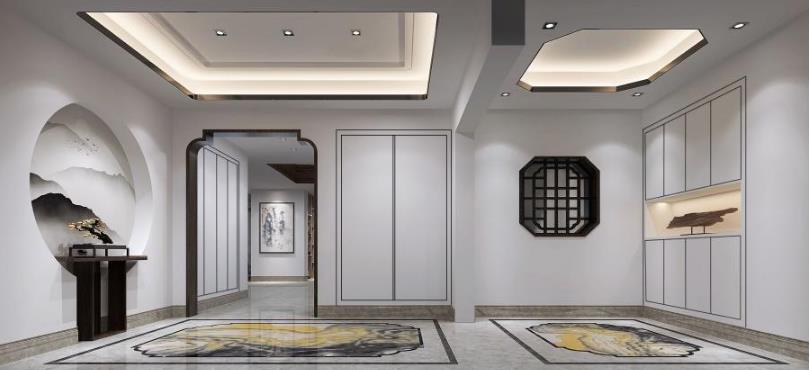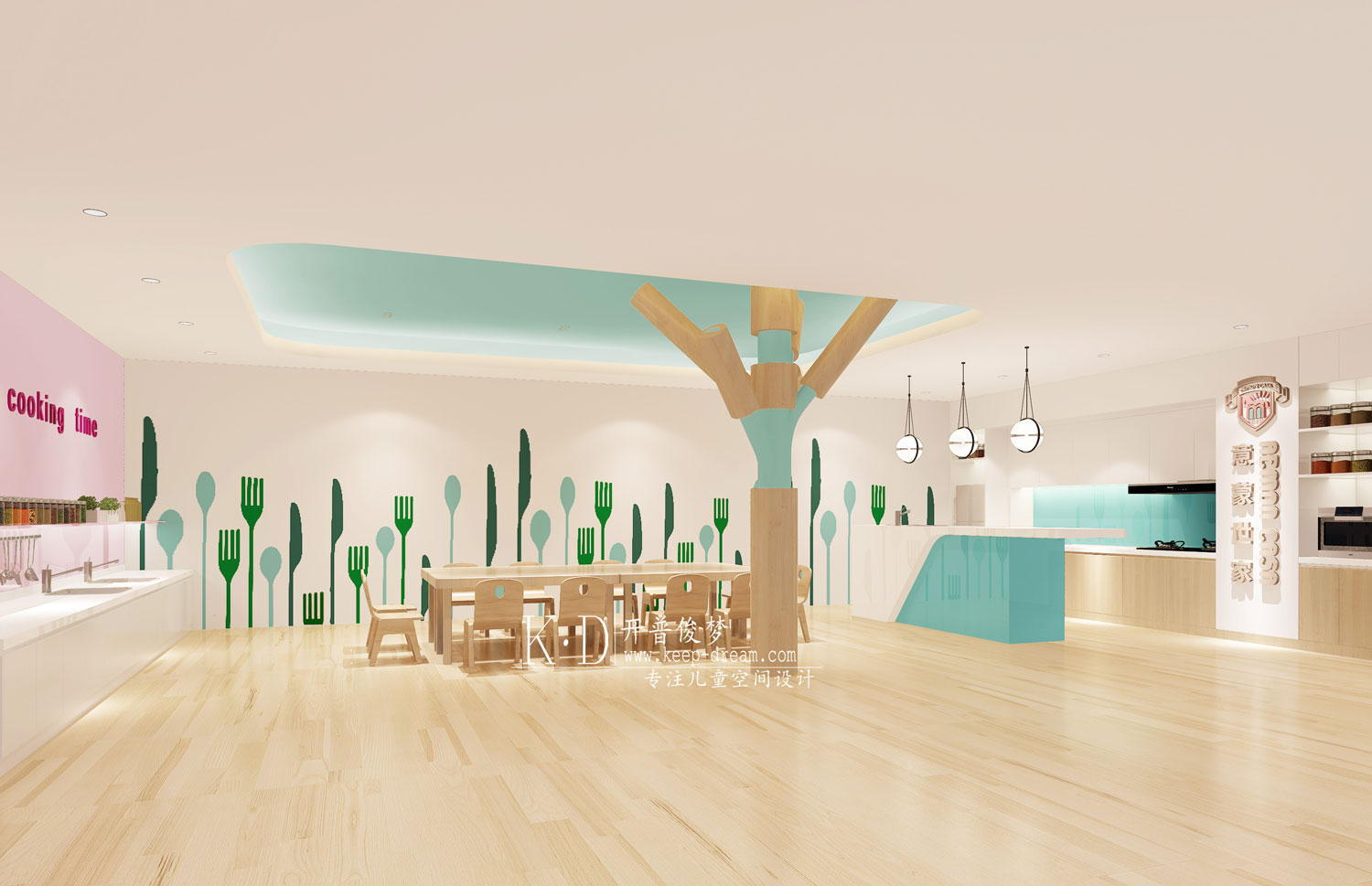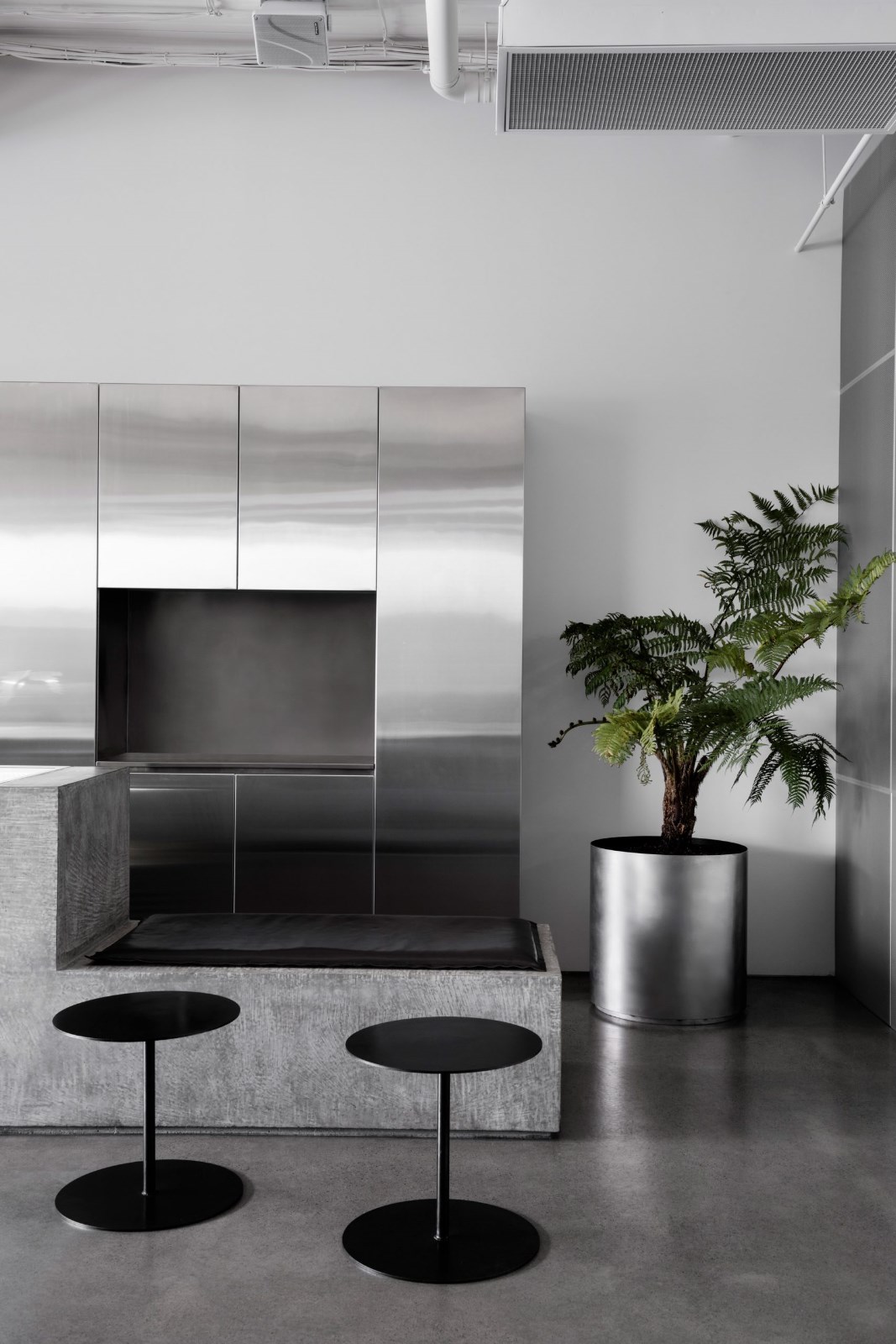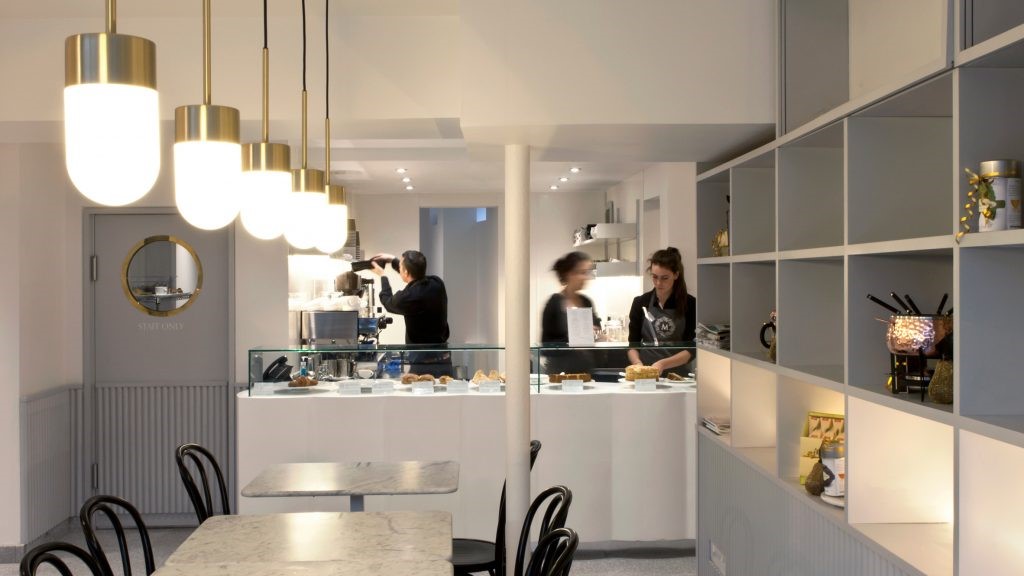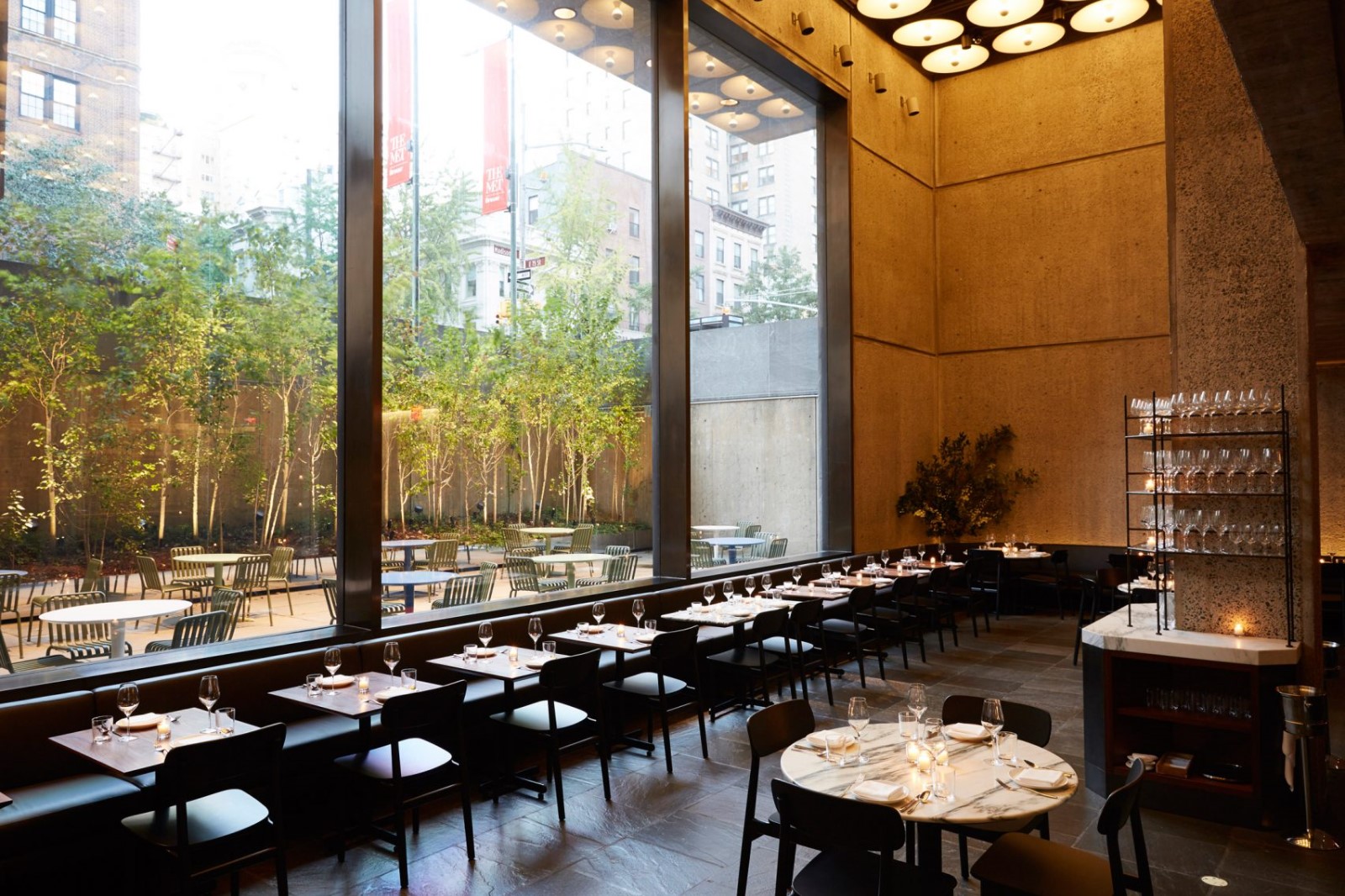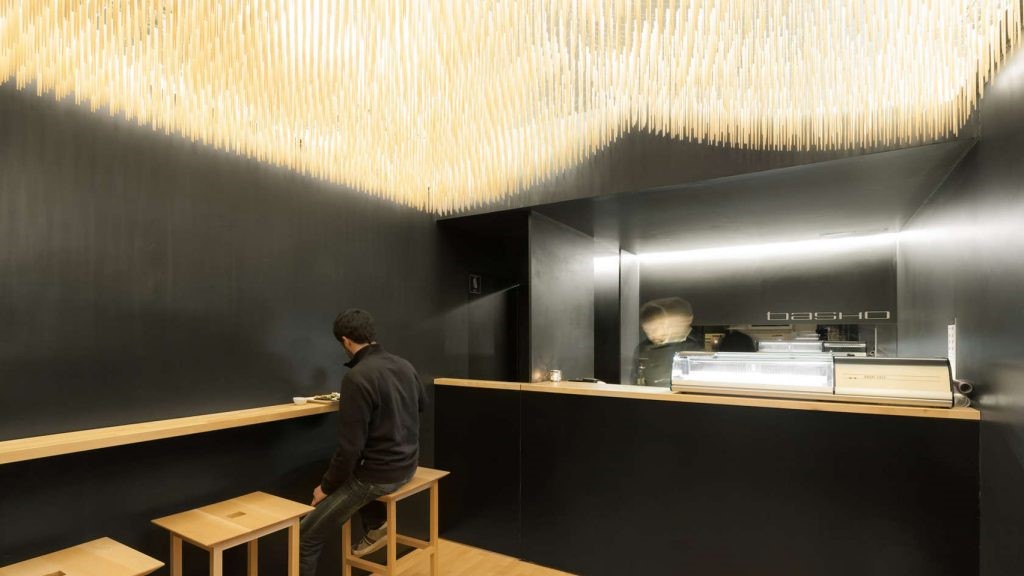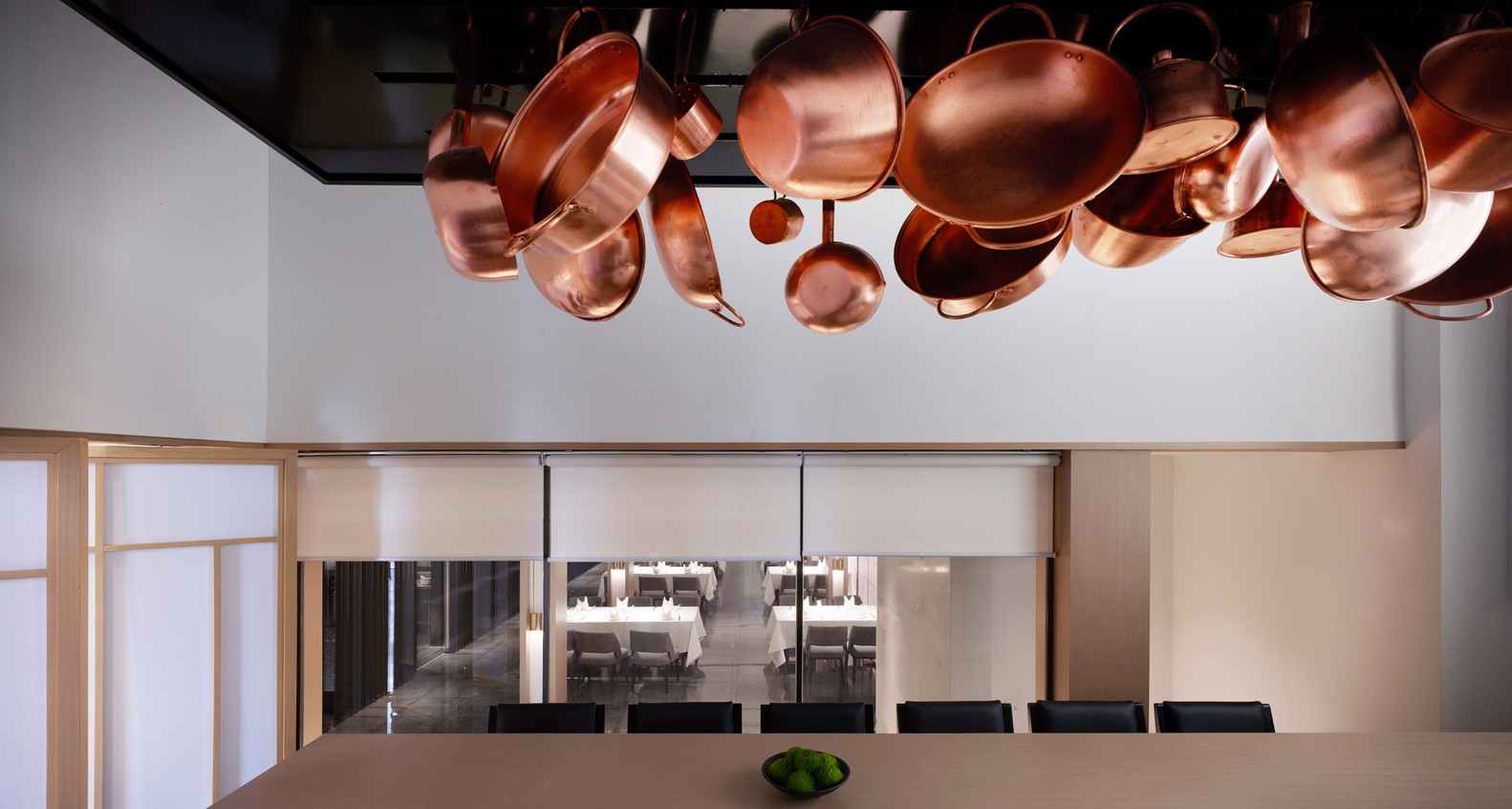Potato Head Hong Kong Sou Fujimoto Architects
2016-06-25 20:00
架构师提供的文本描述。土豆头香港代表了东京建筑师窦藤本在香港的第一个项目。这片8000平方英尺的空间是藤本和PTT家族内部创意团队之间的合作,将藤本的标志性风格与该集团在现代背景下争取印尼工艺冠军的努力结合在一起。
Text description provided by the architects. Potato Head Hong Kong represents Tokyo-based architect Sou Fujimoto’s first project in the city. The 8,000 square foot space is a collaboration between Fujimoto and PTT Family’s in-house creative team, blending Fujimoto’s signature style with the group’s drive to champion Indonesian craftsmanship in a modern context.
香港土豆头的设计展示了现代和传统的巧妙结合,通过轻金属固定装置和厚重的柚木。混合使用的空间唤起了一种住宅的感觉,与不同的地区,有机地流入彼此。
Potato Head Hong Kong’s design showcases a deft mix of contemporary and traditional influences through lightweight metal fixtures with heavy crafted teak wood. The mixed-used space evokes a residential feel with distinct areas that organically flow into each other.
藤本最著名的是被邀请来设计2013年蛇形画廊展馆。除了成为获得业内最高荣誉之一的最年轻的建筑师之外,他还加入了一份杰出的过去展馆建筑师名单,其中包括弗兰克·盖里(Frank Gehry)和已故奥斯卡·尼迈耶(Oscar Niemeyer)。
Fujimoto is best known for being invited to design the 2013 Serpentine Gallery Pavilion. Aside from becoming the youngest architect to earn one of his industry’s highest honours, he joined an illustrious list of past pavilion architects that includes Frank Gehry and the late Oscar Niemeyer.
Courtesy of Potato Head Hong Kong
香港土豆头提供了一个机会,让藤本在世界上人口最稠密的城市之一探索内外空间的概念。从“土豆头”的外墙开始,他采取了看似简单的外墙玻璃面板,并采用了一种与香港传统窗框相呼应的图案,并使用这些图案覆盖整个结构。传统上是用钢做的,框架的设计是为了提高安全性。其效果是透明的、同质化的外观,它不会把自己强加给邻里,但却悄无声息地-但令人印象深刻-脱颖而出。从远处看,场地看起来像一个强烈的,白色的发光物体。只有在接近时,它才能揭示其错综复杂的模式。
Potato Head Hong Kong presented an opportunity for Fujimoto to explore the concept of inside and outside spaces in one of the most densely populated cities in the world. Starting with Potato Head’s façade, he takes deceptively simple exterior glass panels and applies a pattern that echoes traditional Hong Kong window frames, and uses these to cover the entire structure. Traditionally made with steel, the frames are designed to enhance security. The effect is a transparent homogenous façade that doesn’t impose itself on the neighborhood, but quietly – yet impressively – stands out. From a distance, the venue appears as a strong, white glowing object. Only upon approach, does it reveal its intricate pattern.
Courtesy of Potato Head Hong Kong
同样地,他的蛇形亭的格子结构作为一种渗透膜,模糊了外部和内部之间的界限,马铃薯头的入口向社区敞开,让他的装置倾入街头。这突显出“土豆头”的目标是成为每个人欢迎的目的地,从当地人过来喝咖啡,或顺便去买手工家居用品,再到高管们在休息室里工作一整个上午,以及家人在考姆餐厅享用一顿饭。
In the same way his lattice structure for the Serpentine Pavilion acted as a permeable membrane blurring the boundaries between exterior and interior, Potato Head’s entrance opens up to the community to allow his installation to pour into the street. This underscores Potato Head’s aim to be a welcoming destination for everyone, from locals popping in to grab coffee or stopping by to shop for artisanal homewares, to executives spending the morning working in the lounge and families enjoying a meal at Kaum restaurant.
Courtesy of Potato Head Hong Kong
入口有一个通往街道的咖啡柜台和一个零售空间,建筑师现在的标志性金属框架和盒子创造了独特而开放的空间。从天花板上悬挂下来的是藤本的不锈钢播种机,创造了漂浮森林的错觉,而这个空间似乎没有边界。
The entrance is marked with a coffee counter that opens to the street and a retail space where the architect’s now-iconic metal frames and boxes create distinct but open spaces. Suspended from the ceiling are Fujimoto’s stainless steel planters, creating the illusion of a floating forest over a space that imperceptibly appears to have no boundaries.
酒吧区是一个五彩缤纷、富有热带色彩的空间,最清楚地提到了PTT家族在巴厘岛的岛屿家园和旗舰地产。充满活力的墙壁和开放式的设置代表了土豆头的悠闲和乐观的愿景。品牌设计dna的另一个标志性特征是定制的印尼家具与世纪中期经典家具以及马塞尔·布鲁尔(Marcel Breur)皮革扶手椅等古董家具的组合。
The bar area is a colourful and tropically inspired space that most clearly references PTT Family’s island home and flagship property in Bali. The vibrant walls and open-plan setup represent the laid-back and optimistic vision of Potato Head. Another signature feature of the brand design DNA is the mix of customised, Indonesian furniture with mid-century classics and antique pieces like the Marcel Breur leather armchairs.
Courtesy of Potato Head Hong Kong
内部的抵抗是在Kaum,PTT家庭的现代印尼餐饮概念,超过700手绘面板从托拉贾两侧天花板和墙壁。这些嵌板是由工匠的家庭制作的,并委托了这批数量惊人的雕刻作品,以确保这一技能传授给制作他们的村庄的年轻一代。虽然面板的黑色是实际油漆,黄色和橙色的颜色是从当地的石头。用于板的木材(Kayu Uru)也在Toraja当地种植。
The interior’s piece de resistance is in Kaum, PTT Family’s modern Indonesian dining concept, where over 700 hand-painted panels from Toraja flank the ceilings and walls. These panels were made by families of craftsmen and commissioning this staggering number of carvings helped ensure the skill is passed on to the younger generations of the village that made them. While the black colour of the panels is actual paint, the yellow and orange hues are taken from local stones. The timber (kayu uru) used for the panels are also grown locally in Toraja.
隐藏在Kaum后面的是音乐室,这是马铃薯头部最独特的空间之一。为了成为这个城市的唱片收藏家和音乐爱好者的中心,它传达了秘密音乐休息室的气氛。通过三种途径-从入口进入一条隐藏的走廊,通过Kaum或通过高街的一个秘密入口-它的木质镶板和高度绝缘的内部结构为客人提供了最佳的聆听体验。房间的一整堵墙都摆满了唱片和巨大的JBL 4350扬声器。
Hidden behind Kaum is the Music Room, one of the most unique spaces in Potato Head. Designed to become a hub for the city’s record collectors and audiophiles, it conveys the mood of a secret music lounge. Accessed three ways -- through a hidden corridor from the entrance, through Kaum or through a secret entrance on High Street – it’s wood-paneled and deeply insulated interiors provide the optimum listening experience for guests. An entire wall of the room is filled with records as well as the mammoth JBL 4350 speakers.
Courtesy of Potato Head Hong Kong
作为一个目的地,“土豆头”香港是一个欢迎和忙碌的空间,每个人都可以尽情享受,而不会感到被困,这在香港市区是罕见的。
As a destination, Potato Head Hong Kong is a welcoming and bustling space for everyone to enjoy without feeling penned in, a rarity in urban Hong Kong.
 举报
举报
别默默的看了,快登录帮我评论一下吧!:)
注册
登录
更多评论
相关文章
-

描边风设计中,最容易犯的8种问题分析
2018年走过了四分之一,LOGO设计趋势也清晰了LOGO设计
-

描边风设计中,最容易犯的8种问题分析
2018年走过了四分之一,LOGO设计趋势也清晰了LOGO设计
-

描边风设计中,最容易犯的8种问题分析
2018年走过了四分之一,LOGO设计趋势也清晰了LOGO设计





























































